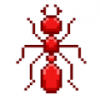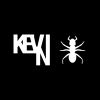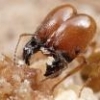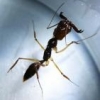Ordered from most favorite to least favorite
1. Lasius neoniger
This sp. has been with me since the very beginning. They are the most common ant here and I just love how simplistic they are; A perfect example of a nice, native ant. You can also use them as hosts for a Lasius parasite colony!
2. Prenolepis imparis
The most beautiful ant in the world (especially the workers!), I think. They are a common sp where I live, and it is so fun to watch them climb their trees and drink their sap. Their wonky schedule is also quite unique; Active winters and inactive summers.
3. Lasius claviger
A dream ant to keep. Common, but difficult as balls to raise. The queens are sick looking, the colonies enormous. It is always a joy to find an open colony ready for flight, and their openings spread over a large area. Of course, the main attraction is that they are temporary social parasites.
4. Temnothorax curvispinosus
A beautiful species. I have personally never found any, but their unique nesting habit (in acorns) is interesting. Tiny ants, too. Love small ants.
5. Pheidole pilifera
probably the most dreamy, and elusive, ant in New England. I mean, Big-Headed ants in New England, one of the coldest places in the US? Heck yeah! I have never found these due to how rare they are but this will probably be my down-the-road goal as an ant keeper.
Love this list!!! I would of put Lasius neoniger in my list if i wasn't basing mine around species that I particularly enjoy observing in the wild. They will always have a place in my heart as one of my favorite ants to rear!!! Btw, I have to ask and I am sorry if this is too forward, but are you from New England and if so, what part? If so, we should totally hang out sometime. There are so few antkeepers here
I live in Northern MA, a small town near Boston. You should definitely check out this thread from ACAF. We New Englanders are very active on that topic and it is very useful for us. Take the time to read it all and also post anything flight-related. I think this is the largest thread of ACAF.
Not only that we are relatively far away, I unfortunately am young and cannot drive or anything. So we can't meet up.
It's ok, thanks for letting me know ![]()





















